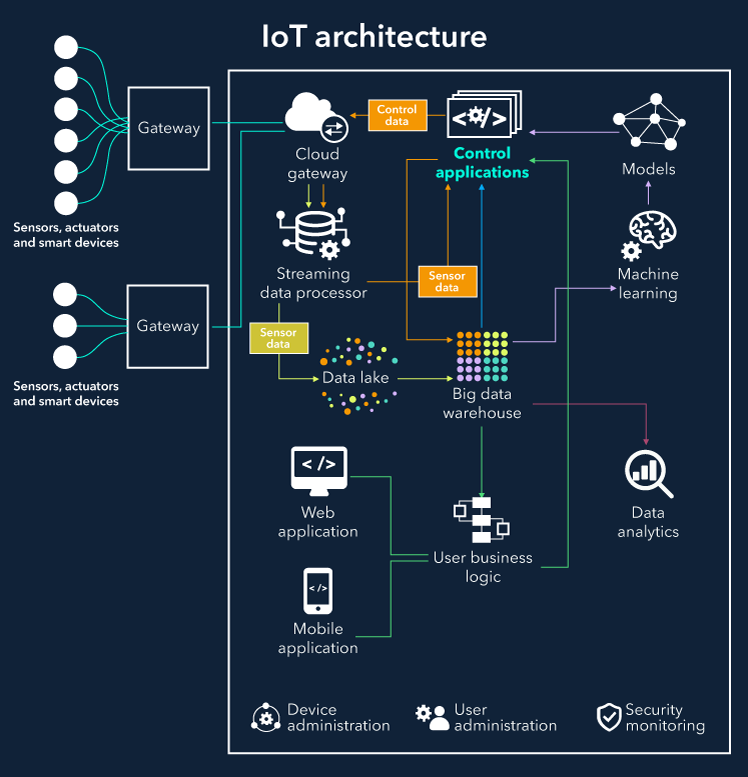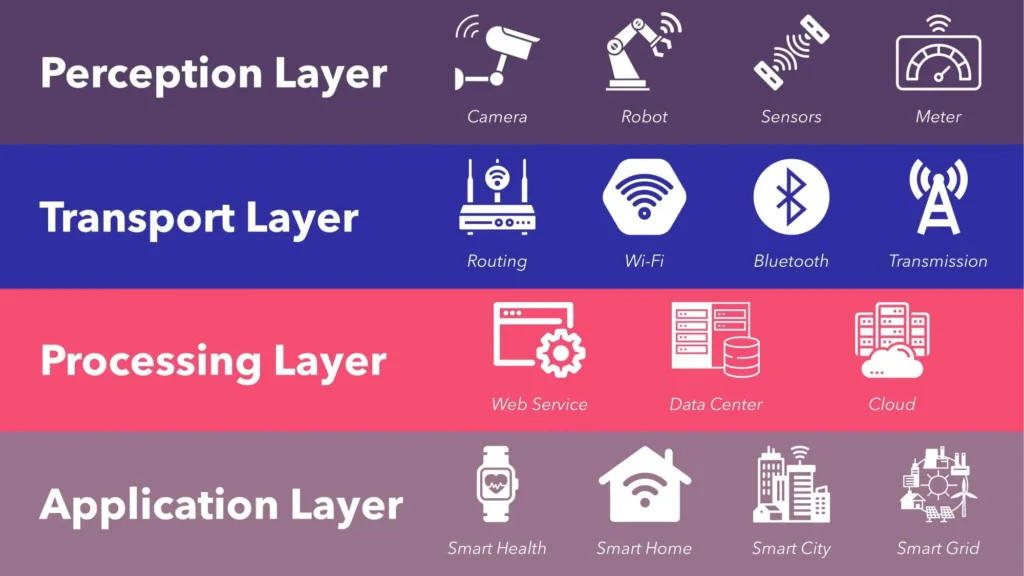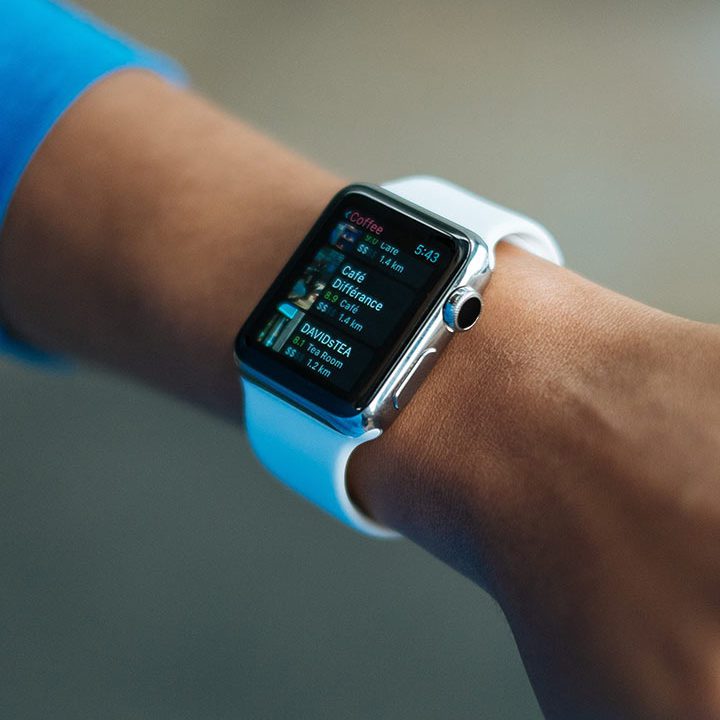The Internet of Things (IoT) connects physical devices to the digital world, enabling data-driven decision-making. Its architecture is a multi-layered framework that ensures seamless data flow from sensors to end-user applications. Let’s break down its components, functionality, and challenges.

Layers of IoT Architecture
1. Perception/Sensing Layer
(Image suggestion: Various sensors, actuators, and IoT devices in industrial, agricultural, and smart home settings.)
This layer is the physical foundation of IoT, comprising:
- Sensors: Capture data (e.g., temperature, motion).
- Actuators: Perform actions (e.g., adjusting thermostat settings).
- Edge Devices: Preprocess data locally (e.g., smart cameras).
Use Cases:
- Smart farming (soil moisture sensors).
- Wearables (heart rate monitors).
2. Connectivity/Network Layer
(Image suggestion: Network infrastructure diagram with Wi-Fi, Bluetooth, LPWAN, and cellular connections.)
This layer transmits data from devices to the cloud or on-premise servers. Key components include:
- Protocols: MQTT, HTTP, LoRaWAN, Zigbee.
- Gateways: Aggregate and filter data before transmission.
- Communication Channels: 5G, Wi-Fi, satellite.
Challenges:
- Latency in real-time systems.
- Security vulnerabilities during transmission.
3. Data Processing Layer
(Image suggestion: Cloud servers, data centers, and analytics dashboards.)
Raw data is transformed into actionable insights here:
- Edge Computing: Immediate processing at the source (e.g., fault detection in machinery).
- Cloud Computing: Scalable storage and advanced analytics (e.g., predictive maintenance).
- Tools: AWS IoT, Azure IoT Hub, Hadoop.
4. Application Layer
(Image suggestion: User interfaces like mobile apps, dashboards, and alert systems.)
This layer delivers user-centric services:
- Smart Applications: Remote monitoring, asset tracking.
- APIs: Integrate IoT data with ERP or CRM systems.
- Examples:
- Smart home apps (Nest, Alexa).
- Industrial automation dashboards.
5. Business Layer
(Image suggestion: Business executives analyzing dashboards with KPIs and decision-making workflows.)
IoT data drives strategic decisions:
- Use Cases:
- Supply chain optimization.
- Customer behavior analysis.
- Tools: Power BI, Tableau, custom BI platforms.
How IoT Architecture Works: Step-by-Step

- Data Collection: Sensors monitor environmental parameters.
- Transmission: Data travels via gateways to the cloud.
- Processing: Analytics engines clean, analyze, and store data.
- Action: Insights trigger alerts or automated actions (e.g., HVAC adjustment).
- Business Impact: Reports inform cost-saving or efficiency strategies.
Challenges in IoT Architecture
(Image suggestion: Icons representing security, scalability, and interoperability hurdles.)
- Security: Vulnerable endpoints and data breaches.
- Scalability: Managing millions of devices.
- Interoperability: Device/protocol fragmentation.
- Data Overload: Filtering noise from critical data.
Best Practices for Robust IoT Architecture
(Image suggestion: Checklist with encryption, scalability planning, and protocol standardization.)
- Security First: Use TLS/SSL encryption and regular firmware updates.
- Edge Computing: Reduce latency and bandwidth costs.
- Modular Design: Scale components independently.
- Standardized Protocols: Ensure device compatibility.
Conclusion
(Image suggestion: Futuristic smart city with interconnected IoT systems.)
IoT architecture is evolving with advancements in AI and 5G. By understanding its layers and challenges, organizations can build scalable, secure systems that unlock innovation across industries.







